The NFL Draft, officially the Annual Player Selection Meeting, is an annual event where NFL teams select eligible college football players. The draft order is determined by the previous season's standings, with the team having the worst record picking first and the Super Bowl champion picking last. Teams can either select a player or trade their pick for other draft picks or players. The draft has been held annually since 1936 and serves as the primary way teams acquire new talent.
1925: Inauguration of East-West Shrine Bowl
In 1925, the East-West Shrine Bowl, the oldest running college all-star game, was established.
December 1934: NFL Introduces Waiver Rule
In December 1934, the NFL introduced a waiver rule to prevent teams from trading players to playoff-bound teams late in the season. This rule allowed any player released during the season to be claimed by other teams in inverse order of their standings.
1934: Stan Kostka Leads Minnesota Gophers to Undefeated Season
In 1934, Stan Kostka led the Minnesota Gophers to an undefeated season as a University of Minnesota running back.
May 18, 1935: Bert Bell Proposes NFL Draft
On May 18, 1935, Bert Bell proposed a draft to enhance competitive parity and ensure the financial viability of all NFL franchises. The proposal was adopted unanimously that day.
August 25, 1935: Stan Kostka Signs with Brooklyn Dodgers
On August 25, 1935, Stan Kostka signed a $5,000 contract with the Brooklyn Dodgers, becoming the league's highest-paid player after holding out for the highest possible offer.
1935: Eagles Finish Last in NFL Season
In the 1935 NFL season, the Eagles finished in last place with a 2–9 record, securing the first pick in the upcoming draft.
February 8, 1936: First NFL Draft Begins
On February 8, 1936, the first NFL draft began at the Ritz-Carlton Hotel in Philadelphia. Jay Berwanger was the first player ever selected. The draft lasted for nine rounds and was completed the following day.
1936: Wellington Mara's Drafting Success
In 1936, Wellington Mara demonstrated his drafting skills, resulting in the Giants drafting Tuffy Leemans. Also, Tim Mara reduced Ken Strong's salary offer due to the draft's expected impact on the salary structure of the NFL.
1936: NFL Institutes the Draft
In 1936, the NFL instituted the draft as a response to the bidding war for Stan Kostka.
1936: First NFL Draft Held
In 1936, the first NFL draft was held to recruit players, giving teams positions in reverse order of their previous year's record. This event has occurred annually since its inception.
1937: NFL Draft in New York City
In 1937, the NFL draft was held in New York City.
1938: Steelers Draft Byron "Whizzer" White
In 1938, Art Rooney of the Pittsburgh Steelers drafted Byron "Whizzer" White, who initially stated he would not play professional football. Rooney gave White a guaranteed contract of $15,000 to get him to play, which caused condemnation from other owners.
1939: Kenny Washington Viewed as Great College Player
In 1939, Kenny Washington was considered one of the greatest college football players of all time.
1939: Wellington Mara Takes Charge of Giants Draft
In 1939, Wellington Mara took charge of drafting players for the Giants. He selected Walt Nielsen, a player not on the submitted list, in the first round.
1939: NFL Draft in New York City
In 1939, the NFL draft was held in New York City.
1940: Kenny Washington Not Drafted
In the 1940 NFL draft, Kenny Washington, who was African-American, was not drafted by any team.
1941: NFL Draft in Washington, D.C.
In 1941, the NFL draft was held in Washington, D.C.
1942: "Bullet Bill" Dudley Drafted First Overall
In the 1942 draft, "Bullet Bill" Dudley was the first overall pick and eventually entered the Pro Football Hall of Fame.
1945: NFL Draft in New York City
In 1945, the NFL draft was held in New York City.
1946: Eddie Kotal Hired as First Player Scout
In 1946, Eddie Kotal became the first player scout when he was hired by Dan Reeves of the Los Angeles Rams.
1947: No Competitive Parity
In 1947, competitive parity had not arrived in the NFL as perennial losers, such as the Eagles and Chicago Cardinals, standings' did not improve.
1947: NFL Draft in New York City
In 1947, the NFL draft was held in New York City.
1947: Institution of Bonus Pick
In 1947, the NFL instituted a bonus pick system due to competition with the All-America Football Conference (AAFC).
1949: George Taliaferro and Wally Triplett Make History
In 1949, George Taliaferro became the first African-American selected in the NFL draft. Wally Triplett was chosen in the nineteenth round and would be the first African-American to be selected in the draft and make an NFL team.
1952: NFL Draft in New York City
In 1952, the NFL draft was held in New York City.
1955: NFL Draft in New York City
In 1955, the NFL draft was held in New York City.
1958: Bonus Pick System Abolished
In 1958, the bonus pick system was abolished after all twelve clubs in the league had received a bonus choice.
1960: NFL Draft Marked a Turning Point
In 1960, the NFL draft marked a turning point because of the pending arrival of the American Football League (AFL), as it became a "high-stakes, competitive affair."
1965: NFL Draft Held in New York City Venues
Between 1965 and 2014, the NFL draft was held entirely in venues within New York City, establishing a long-standing tradition before the league sought new locations.
1965: NFL Draft by telephone
In 1965, the NFL draft was held by telephone, with no specific location.
1966: NFL Draft in New York
In 1966, the NFL draft was held in New York.
1976: Paul Salata Coins "Mr. Irrelevant"
In 1976, Paul Salata first coined the moniker "Mr. Irrelevant" to refer to the last overall player selected in the draft.
1977: Origins of NFL Scouting Combine
In 1977, the origins of the NFL Scouting Combine evolved from the National, BLESTO, and Quadra Scouting services.
1977: NFL Supplemental Draft Established
Since 1977, the NFL has held a supplemental draft to accommodate players who did not enter the regular draft.
1978: Shouldergate Controversy
The Shouldergate controversy occurred in 1978, leading to the Pittsburgh Steelers forfeiting a third-round pick in the 1979 NFL draft.
1979: Steelers Forfeit Pick for Shouldergate
The Pittsburgh Steelers forfeited a third-round pick in 1979 for the 1978 Shouldergate controversy, marking one of multiple occasions the team has lost draft selections.
1980: ESPN Broadcasts NFL Draft Live
In 1980, Chet Simmons, president of ESPN, asked Pete Rozelle if the network could broadcast the draft live on ESPN, which Rozelle agreed to.
1980: First Televised NFL Draft
In 1980, the NFL draft was first televised by ESPN, marking the beginning of its evolution into a major U.S. television event.
1980: Draft Picks Forfeited Since 1980
Since 1980, a total of 28 selections have been forfeited by NFL teams for 23 rules violations. The New England Patriots have been penalized the most, losing five draft picks for four violations.
1983: University of Miami's first national championship
In 1983, Bernie Kosar led the University of Miami to its first national championship.
1983: Patriots Exclude Coaching Staff from Draft Decisions
In 1983, New England Patriots head coach Ron Meyer stated that the team, led by owner Billy Sullivan, excluded the coaching staff from any personnel-related decisions, even prohibiting him from reading scouting reports. Meyer disagreed with the choice of Tony Eason in the first round.
1983: Steelers Draft Gabriel Rivera Over Dan Marino
In the 1983 NFL draft, Pittsburgh Steelers' head coach Chuck Noll had "the final say" and drafted Gabriel Rivera over Art Rooney's favorite, Dan Marino, which later haunted the Steelers due to Rivera's short career and Marino's Hall of Fame career.
1984: Supplemental Draft for USFL and CFL Players
In 1984, the NFL held a supplemental draft for players who were under contract with USFL and CFL teams.
1985: Bernie Kosar's controversial draft decision
The 1985 supplemental draft was particularly controversial after Quarterback Bernie Kosar, who had led the University of Miami to its first national championship, decided to turn pro before finishing his eligibility at Miami.
1987: Brian Bosworth's draft strategy
In 1987, Brian Bosworth did not declare for the NFL draft because he did not want to play for the Indianapolis Colts or the Buffalo Bills, who drafted second and third that year. He later signed with the Seattle Seahawks for a record-breaking rookie contract.
1987: ESPN Sunday Night NFL Begins
In 1987, ESPN Sunday Night NFL began, running until 2005.
1988: Death of Art Rooney Sr.
Art Rooney Sr., the owner of the Pittsburgh Steelers, passed away in 1988. Until his death, he frequently reminded his sons that the team "should've drafted Marino" in the 1983 draft.
1988: NFL Moves Draft to Weekend
In 1988, the NFL moved the draft from weekdays to the weekend, improving ESPN's ratings of the coverage dramatically.
1990: Supplemental draft eligibility change
As of the 1990 season, only players who had graduated or exhausted their college eligibility were made available for the supplemental draft.
1993: Supplemental draft eligibility further restricted
Since 1993, only players who had planned to attend college but for various reasons could not, have been included in the supplemental draft.
1995: NFL Draft at The Theater at Madison Square Garden
In 1995, the Theater at Madison Square Garden hosted the NFL draft for a ten-year period.
1998: Steelers Circumvent Salary Cap
In 1998, the Pittsburgh Steelers attempted to circumvent the salary cap involving offensive lineman Will Wolford, which led to the forfeiture of a third-round pick in the 2001 NFL draft.
2001: Steelers Forfeit Pick
In 2001, the Pittsburgh Steelers forfeited a third-round pick due to trying to circumvent the salary cap involving offensive lineman Will Wolford in 1998.
October 2003: NFL Network Launches
In October 2003, the NFL Network launched.
2003: Vikings Late Selection
During the 2003 NFL Draft, the Minnesota Vikings were late with their 7th overall pick selection. The Jacksonville Jaguars drafted quarterback Byron Leftwich, and the Carolina Panthers drafted offensive tackle Jordan Gross before the Vikings were able to submit their selection of defensive tackle Kevin Williams.
2004: End of NFL Draft at The Theater at Madison Square Garden
In 2004, the Theater at Madison Square Garden hosted the NFL draft for the last time.
2005: ESPN Sunday Night NFL Ends
In 2005, ESPN Sunday Night NFL ended.
2005: NFL Draft at Javits Convention Center
In 2005, the NFL Draft was moved to Javits Convention Center.
2006: NFL Draft at Radio City Music Hall
In 2006, the NFL Draft was held at Radio City Music Hall.
2006: NFL Network Provides Competition to ESPN
In 2006, the NFL Network began to produce its own draft coverage, providing competition to ESPN.
2007: FS Paul Oliver drafted in Supplemental Draft
In 2007, FS Paul Oliver was taken by the San Diego Chargers in the fourth round of the supplemental draft.
2007: NFL Draft Time Limit Change
In 2007, the time limits for selections in the NFL draft were adjusted to 10 minutes in the first round, 7 minutes in the second, and 5 minutes in the third through sixth rounds. Previously, the limits were 15 minutes, 10 minutes, and 5 minutes respectively.
2008: Rookie Salary Cap Allotments
In 2008, the Kansas City Chiefs had the highest rookie salary cap allotment at about $8.22 million due to having 12 picks, while the Cleveland Browns had the lowest at $1.79 million with only five picks. The specific mechanisms are set out in the NFL's collective bargaining agreement (CBA).
2008: Chargers forfeit pick in NFL Draft
In the 2008 NFL draft, the San Diego Chargers forfeited a fourth-round pick because they selected FS Paul Oliver in the 2007 supplemental draft.
2009: Detroit Lions Agree to Terms with Matthew Stafford Before the Draft
In the 2009 NFL draft, the Detroit Lions agreed to a six-year, $78 million deal with quarterback Matthew Stafford a day before the draft, and then selected him with the first overall pick. This was the last example of a team agreeing to terms with a player before the draft under the previous rules.
2010: 2010 NFL Draft
In 2010, the NFL draft was held for the 2010 NFL season. The name of the draft each year takes on the form of the NFL season in which players picked could begin playing.
2010: NFL Moves to a Three-Day Draft
In 2010, the NFL moved to a three-day draft format.
2011: Ravens Miss Pick Due to Trade Negotiations
In the 2011 NFL Draft, the Baltimore Ravens missed their pick due to ongoing trade negotiations with the Chicago Bears. As a result, the Kansas City Chiefs were able to make their selection ahead of Baltimore, disrupting the Ravens' planned trade with Chicago.
2011: Predetermined Rookie Compensation
Since 2011, all rookies that are drafted, even those drafted first overall, now have their compensation and duration predetermined each year before the draft occurs, and can no longer negotiate beforehand.
2012: NYC bid for the 2012 Summer Olympics
In 2012, New York City bid for the Summer Olympics.
2014: Scheduling Conflict at Radio City Music Hall
In 2014, a scheduling conflict at Radio City Music Hall, the longtime host venue, forced the NFL to schedule the draft later than planned. This prompted the league to open bidding for a new site to host the 2015 draft.
2014: Last draft at Radio City Music Hall
In 2014, the NFL Draft was held for the last time at Radio City Music Hall.
2014: NFL Draft in New York City
In 2014, the NFL draft was held in New York City.
2014: Cycling Picks for Teams with Identical Records
In the 2014 NFL draft, teams with identical records "cycled" picks in subsequent rounds. For example, the Jacksonville Jaguars, Cleveland Browns, Oakland Raiders, Atlanta Falcons, and Tampa Bay Buccaneers all finished 4–12. Jacksonville picked last in the second round, and the cycling continued in each round.
2015: NFL Draft Held in Chicago
In 2015, Chicago hosted the NFL draft and reimagined it into a large-scale event with the "Draft Town" fan festival in Grant Park, drawing 200,000 visitors and pioneering large-scale attendance and festivities.
2015: Chicago hosts NFL Draft
In 2015, Chicago won the bidding and hosted the NFL Draft for the first time since 1964, marking the transformation of the draft into an event featuring festivities and large public crowds.
2015: Inauguration of Texas event for small college players
In 2015, an independently operated annual post-season college football event was inaugurated in Texas for small college players from FCS, NCAA Division II, NCAA Division III, and the NAIA.
2015: Yearly Bidding Process for NFL Draft Locations
In 2015, future draft locations started being determined through a yearly bidding process, ending its 50 year run in New York City.
2015: Seventh-Round Selection Time Shortened
In 2015, the time allotted for seventh-round selections was shortened from five to four minutes, adding more pressure for teams to quickly make their choices.
2016: Chicago hosts NFL Draft for the second year in a row
In 2016, Chicago hosted the NFL Draft for the second year in a row.
2016: Texas event format change
In 2016, the event in Texas switched to its current drill showcase and "controlled scrimmage" format.
2016: Existence of an event in Florida
Since 2016, an event has been held in Florida, with over 350 alumni playing in the NFL.
2017: Compensatory Selections Can Be Traded
Beginning with the 2017 NFL draft, compensatory selections became tradable, adding another layer of strategy to team draft decisions. Compensatory selections are awarded based on players lost and gained in free agency.
2018: Patrick Mahomes named NFL MVP
In 2018, Patrick Mahomes was named NFL MVP. Later in 2019, he co-hosted the first day of ABC's draft coverage.
2018: Draft Carried on Broadcast Television
In 2018, the draft was carried on broadcast television for the first time ever. Fox and NFL Network simulcast the first two nights, while ESPN continued its coverage, and ABC simulcasted day 3.
2019: ABC picks up broadcast television rights for NFL draft
In 2019, ABC acquired the broadcast television rights for all three days of the NFL draft, ending the Fox/NFL Network simulcast. ABC's coverage featured the College GameDay crew on days 1 and 2, while day 1 also included Good Morning America anchor Robin Roberts, Patrick Mahomes, and Taylor Swift as co-hosts. Day 3 featured the ESPN crew.
2019: NFL Draft in Nashville
In 2019, the NFL draft was held in Nashville.
November 2020: NFL Enacts Resolution JC-2A
In November 2020, the NFL enacted Resolution JC-2A, which rewards teams with draft picks for developing minority candidates who are hired as head coaches or general managers by other teams, aiming to promote diversity.
2020: Virtual NFL Draft
Due to the COVID-19 pandemic, the 2020 NFL draft, initially planned for Las Vegas, was transitioned to a virtual format. NFL Network simulcasted ESPN's coverage for all three days, with personalities from both networks participating remotely. ABC continued to carry a feed with the College GameDay crew for the first two days.
2020: Virtual NFL Draft due to COVID-19
Due to the COVID-19 pandemic, the 2020 NFL draft, originally scheduled to be held in Las Vegas, was held virtually, with teams conducting it via telecommunication.
2020: Trey Wingo Leaves ESPN
In 2020, Trey Wingo left ESPN. As a result, Mike Greenberg took over as ESPN's host for the first two nights of the 2021 NFL draft.
2020: New Compensatory Pick Formula in CBA
The 2020 Collective Bargaining Agreement (CBA) explicitly provided the details of a new formula to determine compensatory draft picks, still based primarily on salary. Previously, the formula was never revealed by the NFL.
2021: NFL Network Returns to Producing Their Own Draft Coverage
In 2021, the NFL Network resumed producing its own coverage of the draft after a one-year hiatus. ESPN and ABC continued to offer separate feeds, with Mike Greenberg hosting ESPN's coverage for the first two nights and Rece Davis hosting ESPN's Day 3 coverage, which was also simulcast on ABC. This marks a return to normal after the virtual draft in 2020.
2022: NFL Teams Trade Draft Picks Through 2024
In 2022, NFL teams are allowed to trade draft picks for the next three draft cycles, meaning picks through the 2024 draft can be traded prior to the 2022 draft. Once the 2022 draft starts, picks from the 2025 draft become eligible to be traded.
2022: Inauguration of HBCU Legacy Bowl
In 2022, the HBCU Legacy Bowl was started for NFL draft-eligible players from historically black colleges and universities (HBCU).
2022: NFL Draft Heads to Las Vegas
In 2022, the NFL draft finally took place in Las Vegas after a two-year delay. ESPN's Adam Schefter missed the draft, Mel Kiper Jr. participated virtually, and Kirk Herbstreit withdrew from ABC's coverage due to blood clots.
2023: Senior restriction for all-star games
Up until the 2023 season, only Seniors or graduates students could participate in the all-star games.
2024: Juniors can participate in all-star games
For the 2024 NFL draft the league eased its rules to allow juniors to participate in three college football postseason all-star games: the Senior Bowl, East–West Shrine Bowl and the HBCU Legacy Bowl, while all other all-star games will not be allowed to invite underclassmen.
2024: NFL Teams Can Trade Draft Picks Through 2024 Before 2022 Draft
Prior to the start of the 2022 NFL draft, teams can trade picks through the 2024 draft. This allows teams to strategize and acquire additional players by leveraging future draft selections.
2024: Record Attendance at 2024 NFL Draft in Detroit
The 2024 NFL draft in Detroit set an all-time attendance record with more than 775,000 visitors, continuing the trend of large-scale attendance and festivities.
2025: NFL Draft in Green Bay
In 2025, the NFL draft will be held in Green Bay.
2025: 2025 Draft Picks Eligible for Trading
Once the 2022 NFL draft commences, teams become eligible to trade picks from the 2025 draft, offering greater flexibility in team-building strategies.
Mentioned in this timeline
The Kansas City Chiefs are a professional American football team...
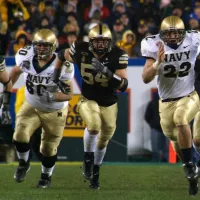
College football is a popular amateur sport in the United...
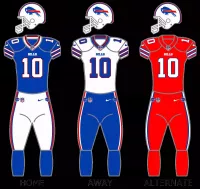
The Buffalo Bills are an NFL team representing the Buffalo...
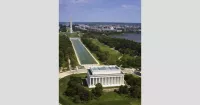
Washington D C is the capital city and federal district...
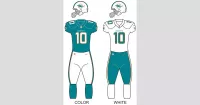
The Miami Dolphins are a professional American football team based...
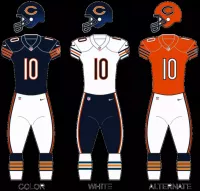
The Chicago Bears are a professional American football team based...
Trending
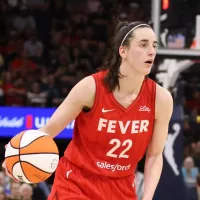
2 days ago Caitlin Clark's soaring earnings: $114K WNBA salary, $16M sponsors despite injury in 2025.
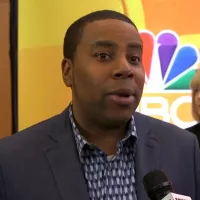
7 months ago Kenan Thompson Addresses Constant Confusion With Kel Mitchell, Good Sport About Fan Mix-Ups
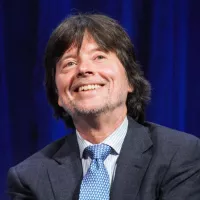
6 months ago Ken Burns' documentary aims to unite US; Filmmakers emulate Burns' style.

6 months ago Deborra-Lee Furness files for divorce from Hugh Jackman amidst Sutton Foster affair rumors.

4 months ago Jon Bon Jovi and Dorothea to Speak at Power of Pink Fundraiser's 30th Year

7 months ago The Weeknd's Late Night Interview Debut with Fallon, Bart Simpson's Fallon Ignorance.
Popular
Matt and Ross Duffer known as the Duffer Brothers are...
Aftyn Alyssa Behn is an American politician currently serving as...
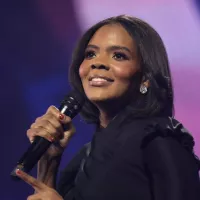
Candace Owens is an American conservative political commentator and author...

XXXTentacion born Jahseh Dwayne Ricardo Onfroy was a controversial yet...
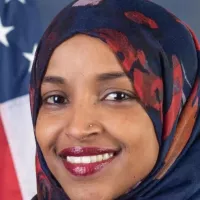
Ilhan Omar is an American politician currently serving as the...
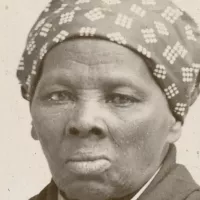
Harriet Tubman was a pivotal American abolitionist and social activist...